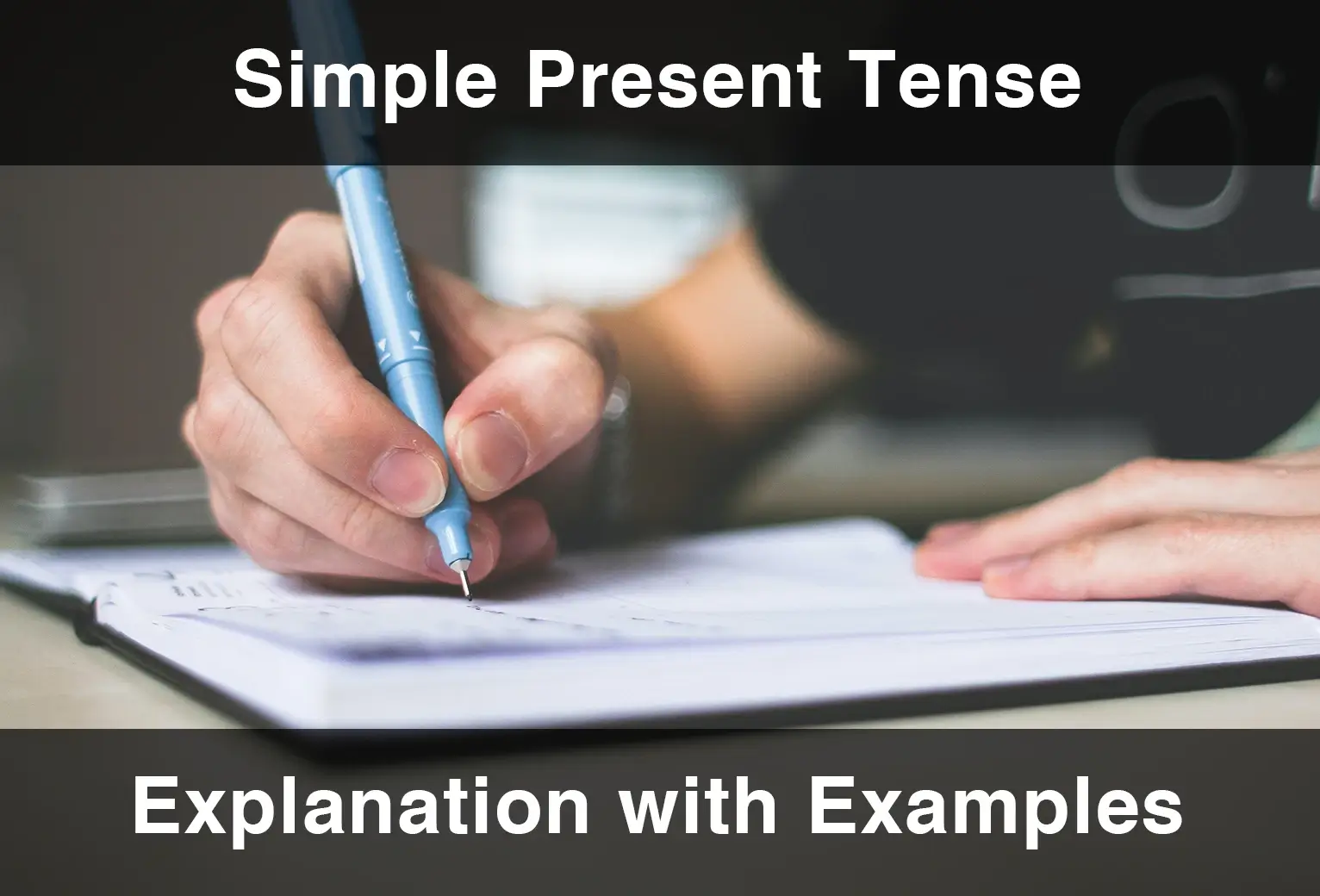As you all know, verbs are words that showcase the action that someone is performing. To learn at what time these actions happen, we use tenses. Tenses change the form of verbs to signify the time they happen. Both verbs and tenses are integral parts of the English language and learning the tenses will help us speak English fluently. Simple Future Tense refers to actions that happen in the future. This guide will help you learn all about the Simple Future Tense.
What Is Simple Future Tense?
Simple Future Tense is used when talking about actions or events that have not happened yet but they will happen later. They will begin and end in the future. To exemplify, in the sentence “Laura will go out today.”, we understand that Laura has not gone out yet, nor is she outside right now. She will go out later today, meaning the action will happen in the future. The Simple Future Tense is the third most commonly used tense in the English language and it is very easy to learn. We use the Simple Future Tense in two forms.
There are two ways to use the Simple Future Tense, “will” and “be going to”. We use one of these two modals depending on the context and what we mean to say. Let’s take a look and learn when to use “will” and “be going to”.
“be going to”
“Be going to” is used to describe future actions that are connected to the present. These connections are:
Prior Plans: Something we decided in the past, or an action or event that was planned beforehand that is going to happen in the future. These actions must have been decided before speaking about them.
Example: I am going to go on a vacation tomorrow, I have already bought the tickets.
Evidence: When we know something is going to happen in the future based on evidence, we use “be going to”.
Example: It’s going to rain, I can see the dark clouds.
Sudden, Unexpected Action: When something is about to happen right now.
Example: Careful, the ball is going to hit you on the head!
“will”
“Will” is used to describe future actions that do not have a connection to the present. These actions are unplanned.
Sudden, Rapid Decisions: When we decide on something right before we speak, we use “will”.
Example: I think I will try the new drink.
Predictions: When we are making guesses and predictions, or state a belief we have about the future.
Example: I think I will win this game.
IMPORTANT NOTE: Both “will” and “be going to” can be used to make predictions.
Example: I think she is going to buy you a present.
Promises: When making a promise, a threat or an offer for the future.
Example: If you finish your homework, I promise I will buy you ice cream.
Refusal: When we are talking about someone refusing to do something, we use the negative form of “will”, which is “won’t (will not)”.
Example: I tried everything, but he won’t come out of his room.
What Are the Grammar Rules of Simple Future Tense?
When using Simple Future Tense, one way is to say subject + “will” + root form of the V1. Whether the subject is singular or plural does not make a difference. Here are some examples.
We will watch 3 movies tonight.
I think she will catch the bus if she leaves now.
Another way to use Simple Future Tense is to say subject + “be going to” + root form of V1. “Be” changes form according to the subject we use. It becomes “am” for “I”, “are” for “You/We/They”, and “is” for “He/She/It”. Whether the subject is singular or plural does not make a difference. Here are some examples:
I am going to wash the dishes in an hour.
You are going to do your homework right now.
He is going to stop drinking soda.
Simple Future Tense Grammar Table
To help you better understand the grammar rules and formula of Simple Future Tense using the “will” modal, here is a table:
| Subjects | Affirmative | Negative | Interrogative |
|---|---|---|---|
| I/ You/ He-She-It/ We/ They | “will” + V1 | “will” not + V1 | “will” + subject + V1 |
To help you better understand the grammar rules and formula of Simple Future Tense using the “be going to” modal, here is a table:
| Subjects | Affirmative | Negative | Interrogative |
|---|---|---|---|
| I/ You/ He-She-It/ We/ They | “be going to” + V1 | “be (not) going to” + V1 | “be going to” + V1 |
How To Construct Sentences With Simple Future Tense
To use Simple Future Tense with the “will” modal, we use the formula subject + “will” + V1. Similarly, for the “be going to” modal, we write subject + “be going to” + V1. Here are some examples:
Don’t worry, you will pass your exams.
I will drink some water later.
They will read this book tomorrow.
We will go shopping today.
He is going to take his cat to the vet.
We are going to go to Italy next Tuesday.
They are going to cook tomorrow.
I am going to go to yoga at 6 pm.
Affirmative Simple Future Tense Sentence Examples
To form an affirmative Simple Future Tense sentence using “will”, we write subject + “will” + V1. Here is a table and 5 examples:
| Subject | Modal | Verb |
|---|---|---|
| I | Will | V1 |
| You | Will | V1 |
| He/She/It | Will | V1 |
| We | Will | V1 |
| They | Will | V1 |
I will go to school next week.
She will start working in that building.
You will stop bothering me when I’m working.
They will come by later.
We will cut heart shapes out of these papers.
To form an affirmative Simple Future Tense sentence using “be going to”, we write subject + “be going to” + V1. Here is a table and 5 examples:
| Subject | Modal | Verb |
|---|---|---|
| I | am going to | V1 |
| You/ We/ They | are going to | V1 |
| He/ She/ It | is going to | V1 |
He is going to stop drinking coffee.
I am going to do the dishes tonight.
You are going to talk to the customers.
We are going to start our homework next Saturday.
They are going to love this new restaurant.
Negative Simple Future Tense Examples
To form a negative Simple Future Tense sentence, we write subject + “will not” (won’t) + V1 or subject + “be (not) going to” + V1. Here is a table and some examples for negative Simple Future Tense sentences.
| Subject | Modal + Negative Adverb | Verb |
|---|---|---|
| I | “Will” + not (won’t) | V1 |
| You | “Will” + not (won’t) | V1 |
| He/She/It | “Will” + not (won’t) | V1 |
| We | “Will” + not (won’t) | V1 |
| They | “Will” + not (won’t) | V1 |
I will not go to work tomorrow.
She won’t stop singing.
They won’t go to school anymore.
To form a negative Simple Future Tense sentence, you can also use “be going to”. Here is a table and some examples for negative Simple Future Tense sentences.
| Subject | Modal + Negative Adverb | Verb |
|---|---|---|
| I | am not going to | V1 |
| You/We/They | are not going to | V1 |
| He/She/It | is not going to | V1 |
I am not going to stop studying.
We aren’t going to go camping.
He is not going to visit his grandmother today.
Interrogative Simple Future Tense Examples
To form an interrogative sentence using the “will” modal in Simple Future Tense, “will” + subject + V1 and “will not” (won’t) + subject + V1. Here are some tables and examples for interrogative sentences in Simple Future Tense.
| Modal / Negative | Subject | Verb |
|---|---|---|
| will OR will + not (won’t) | I | V1 |
| will OR will + not (won’t) | You | V1 |
| will OR will + not (won’t) | He/She/It | V1 |
| will OR will + not (won’t) | We | V1 |
| will OR will + not (won’t) | They | V1 |
Will you go to the movies with me?
Will he come to school today?
Will they start their homework?
Won’t you read this book?
Won’t she go to her cousin’s house next week?
To form an interrogative sentence using the “be going to” modal in Simple Future Tense, “be going to” + subject + V1 and “be (not) going to” + subject + V1.
| Modal | Subject | Verb |
|---|---|---|
| Am | I | going to + V1 |
| Are | You/We/They | going to + V1 |
| Is | He/She/It | going to + V1 |
Are you going to come work today?
Are we going to go on a trip this weekend?
Is he going to come to karaoke with us?
To form a negative interrogative sentence using the “be going to” modal in Simple Future Tense, we write “be (not) going to” + subject + V1. This formula can have two forms with each subject. With the subject “I”, we either write “Am I not going to…” or “Aren’t I going to”. With the subjects “You/We/They” we either write “Aren’t you/we/they going to…” or “Are you/we/they not going to…” With the subjects “He/She/It” we either write “Is he/she/it not going to…” or “Isn’t he/she/it not going to…” All of these forms are correct and they do not change the meaning.
| Modal + Negative | Subject | Verb |
|---|---|---|
| Am not / Are not (aren’t) | I | going to + V1 |
| Are not (aren’t) | You/We/They | going to + V1 |
| Is not going to (isn’t) | He/She | going to + V1 |
Aren’t they going to stop behaving like this? / Are they not going to stop behaving like this?
Isn’t it going to rain today? / Is it not going to rain today?
Aren’t I going to come to your house tomorrow? / Am I not going to come to your house tomorrow?
To form interrogative sentences in Simple Future Tense using question words (what, who, where etc.), we use the formula question word + will + subject + verb. To help you better understand, here is a table and a few examples.
| Question Word | Modal | Subject | Verb |
|---|---|---|---|
| what, where, when, why, who, how, how many, how much etc. | will | I/You/He-She-It/We/They | V1 |
What will I read next?
Where will she go?
Who will you ask to go to the movies with you?
How much will they spend if they go on a vacation?
How many apples will we eat on our picnic?
To form interrogative sentences in Simple Future Tense using question words (what, who, where etc.), we use the formula question word + be going to + subject + verb. To help you better understand, here is a table and a few examples.
| Question Word | Modal | Subject | Verb |
|---|---|---|---|
| what, where, when, why, who, how, how many, how much etc. | am going to | I | V1 |
| what, where, when, why, who, how, how many, how much etc. | are going to | You/We/They | V1 |
| what, where, when, why, who, how, how many, how much etc. | is going to | He/She/It | V1 |
How am I going to go to the bus stop?
Why are you going to quit school?
What is she going to do when she visits her parents?
When are we going to go to class today?
Who is it going to attack now?
When writing negative interrogative sentences with the “be going to” modal in simple future tense using question words, there is an exception with the subject “I”. When writing a positive interrogative sentence, we use the first-person singular simple present indicative form of be, which is “am”. When writing a negative interrogative sentence, we use are not (aren’t). Unlike the positive interrogative sentences we learned earlier, these differences are not interchangeable as they change the meaning.
| Question Word | Modal + Negative | Subject | Verb |
|---|---|---|---|
| what, where, when, why, who, how, how many, how much etc. | aren’t (subject) going to | I | V1 |
| what, where, when, why, who, how, how many, how much etc. | aren’t (subject) going to | You/We/They | V1 |
| what, where, when, why, who, how, how many, how much etc. | isn’t (subject) going to | He/She/It | V1 |
Why aren’t you going to come to my party?
Why isn’t she going to finish her homework on time?
Who aren’t we going to invite to her birthday party?
Adverbs of Time (Temporal Adverbs) In Simple Future Tense
Adverbs of time indicate the time in which the actions in question happen. We know that Simple Future Tense refers to actions that will happen in the future. Temporal adverbs help us further specify the time period of the actions. Some adverbs that we can use with Simple Future Tense are:
Soon,
Today/Later Today,
Later,
Next Week/Month/Year,
Tomorrow,
In … (2-3-4) Days,
Here are some examples:
I will come over soon.
He is going to bring the cake later today.
Are you going to do your homework later?
We are going to go on a vacation next month.
How will I go to school tomorrow?
Won’t she leave town in 3 days?
Frequently Asked Questions About Simple Future Tense
What is the difference between Future Tense and Simple Present Continuous Tense?
Simple Future Tense is used when referring to actions or events that have not happened yet, on the other hand, Simple Present Continuous Tense is used when referring to actions or events that are currently happening.
What is the Difference Between Simple Future Tense and Present Perfect Tense?
Simple Future Tense is used when referring to actions or events that have not happened yet, while Present Perfect Tense is used when referring to actions or events that have started in the past and are still continuing.
What is the difference between Future Tense and Past Perfect Continuous Tense?
Simple Future Tense is used when referring to actions or events that have not happened yet, on the other hand Past Perfect Continuous Tense is used when referring to actions or events that started in the past and continued for a while before stopping, still in the past.
Would you like to put what you have learned into practice? You can access everything you need to learn English on a single platform! With 25-minute one-on-one live English lessons, 40-minute group lessons, more than 30,000 interactive videos, vocabulary learning tools, AI-supported tutor MiMi, quizzes, and interactive activities, EnglishCentral offers its users a personalized and quality education plan at an affordable price. How about registering for EnglishCentral now and starting to learn English?











